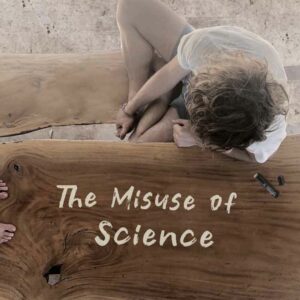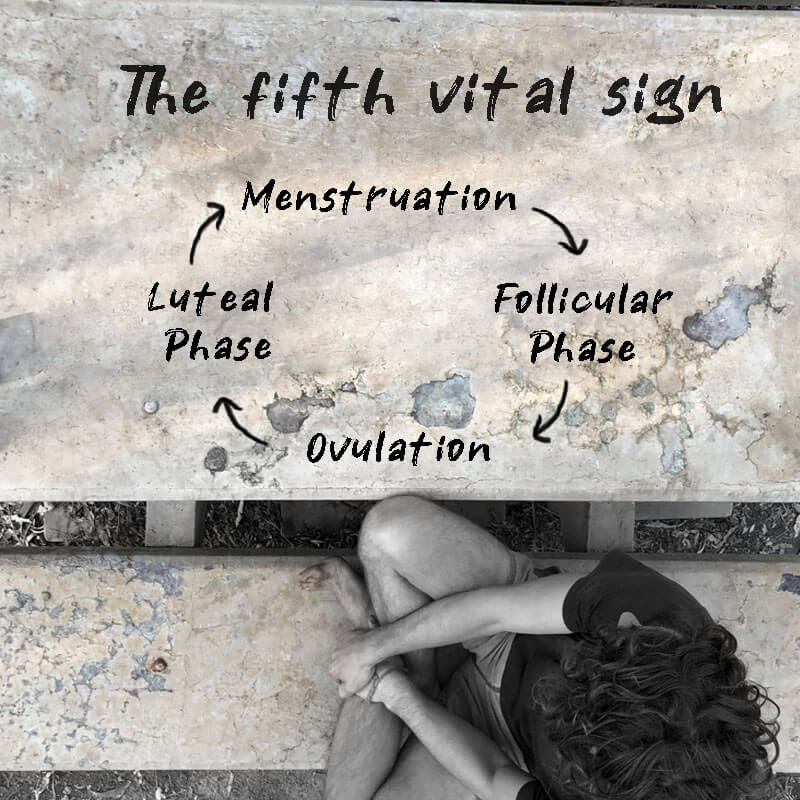In an insightful and thought-provoking conversation, Eckhart Tolle, renowned spiritual teacher and author, conversed with Russell Brand, a multifaceted comedian and host known for his inquisitive mind. The dialogue unfolded a multitude of spiritual nuances, revealing profound insights into human consciousness, suffering, spiritual teachings, and the power of the present moment.
Early story about arising of the ego: the myth of narcissus
Eckhart Tolle, in his dialogue with Russell Brand, elaborated on the ancient myth of Narcissus to elucidate the origins and nature of the ego and the pitfalls of narcissism. Narcissus, a strikingly handsome young man in ancient Greece, saw his reflection in a pool of water. The traditional narrative tells of him falling in love with his image, but Tolle interprets this as an obsession with the image of himself. This obsession heralded unhappiness and misfortune in his life. Tolle posits that this myth is a profound allegory for the birth of the human ego: a phantom self, built upon a myriad of identifications—possessions, physical appearance, skills, knowledge, and more.
Egoic Sense of Self and the Ego’s Insatiable Desire
According to Eckhart Tolle, the “egoic sense of self” refers to the mental image or identity that people form of themselves based on their thoughts, emotions, and experiences. This self-image is rooted in one’s past, memories, societal conditioning, and personal narratives.
The ego is never truly satisfied. There’s always an underlying feeling of insufficiency, or “not enough.” This restlessness stems from the fact that the ego is just a mental construct, always seeking validation and affirmation. Because of its insatiable nature, the ego constantly wants more, leading to feelings of lack and discontent.
The Ego Needs Enemies
Eckhart Tolle delves into the workings of the ego, explaining how it thrives on creating antagonists or “the other” in order to define and strengthen its identity. According to him, even in the best of circumstances, the ego actively seeks and needs an antagonist. It not only requires “the other” but seeks to emphasise the “otherness” of this counterpart. This compartmentalised sense of self hinges on having perceived “enemies” outside of oneself. Without this opposition, the ego’s identity would begin to dissolve.
“A person who is totally in the grip of the ego cannot meet you. When you talk to this person or you come together, he or she sees you through an image that arises in the egoic mind.” | Eckhart Tolle
One vivid example Tolle uses is racism. If someone’s egoic identity is largely defined by their race, this definition is only possible if there are people around them of a different race. This identification through race enables the ego to seek enemies and feel a sense of superiority. At its core, racism begins in the mind, originating from identifying with a thought form about one’s racial identity and the subsequent perception of others being inferior.
The ego imposes identities onto others, seeing them not for who they truly are, but rather through a mental image it has crafted. This distorted view prevents genuine human connection, creating barriers and preventing feelings of empathy, compassion, and love from arising. Such qualities are inimical to the ego’s existence. Hence, people trapped in an egoic sense of self miss out on these true human virtues, living instead through a false self-perception.
The False Sense of Self or The Unreality of Self
Drawing insights from the teachings of Buddha, Eckhart Tolle elaborates on the transient nature of the egoic self. Tolle, much like the Buddha, suggests that our sense of self, rooted predominantly in thoughts and desires, is an illusory construct. This illusion of a permanent self is a primary source of human suffering. The Buddha, through his doctrine of “anatta” or “non-self,” emphasised this very idea. He taught that what one perceives as the “self” is merely a collection of changing attributes and experiences.
“The essence of ego you could say is complete identification with thoughts, so empty recurring thoughts in your mind that tell you who you are, that’s the ego, and for people who are unconscious of that they are so in the grip of these thought forms that they are virtually asleep, there’s nobody there” | Eckhart Tolle
Further building on Buddha’s teachings, Tolle emphasises the presence of an underlying consciousness. This isn’t the fluctuating mind that gets entangled in the daily rigmarole of life but a vast, stable presence. It’s an observer, one that doesn’t get caught up in emotions or thoughts. Echoing this, the Buddha’s teachings consistently pointed to an innate consciousness, existing beyond the impermanence of our worldly identities.
By synthesising the essence of Buddha’s teachings, Tolle offers a contemporary lens to understand the age-old truths about self and consciousness. Both perspectives, although emerging from different times and contexts, converge on the same truth: the real essence of a being is not the transient ego but the ever-present consciousness underneath.
Exploring Our Identity & Consciousness:
Form Identity
Eckhart Tolle suggests that while many people identify with their “form identity” – including their body, material possessions, social standings, and even their thoughts – this isn’t reflective of their true self. This form identity is ever-changing and can often divert attention away from the underlying and enduring aspect of who we really are.
Using a compelling analogy, Tolle describes a room. At first glance, a room might understand itself through its tangible elements: the furniture, walls, and decorations. Similarly, humans often perceive themselves through their thoughts, beliefs, and emotions. But the room’s essence, the space it encompasses, goes unrecognised. This unchangeable space parallels our deep-seated consciousness, which remains steady despite the ebb and flow of life’s transient experiences.
Object Consciousness & Space Consciousness
When humans become overly fixated on their form identity, they may neglect their deeper essence. This oversight can lead to a limited perspective, resulting in unnecessary comparisons and a false sense of superiority. Tolle elaborates on this by differentiating between “object consciousness” – our engagement with fleeting thoughts and emotions – and “space consciousness” – the foundational awareness that observes without attachment. This deeper awareness provides a more comprehensive understanding of our authentic nature.
Additionally, Tolle bridges spiritual teachings from different traditions. He highlights the Buddhist concept of “emptiness”, suggesting a more accurate translation might be “spaciousness”. This is likened to Jesus’ teachings about the “Kingdom of Heaven.” In Tolle’s perspective, the “Kingdom” symbolises a realm of consciousness or spaciousness that exists within each of us. Essentially, Jesus emphasised that our innate consciousness, this “Kingdom”, is central to our true identity and the “Kingdom of Heaven” is within us.
Thought Noise and the Undiscovered Dimension: Awareness
Eckhart Tolle conveys the idea that sensory perception and thought are overwhelming in their intensity, making it difficult to tap into the underlying dimension of awareness.
Many individuals are continually preoccupied with their personal history or the future. In these moments of heightened awareness of the present, one’s historical or conventional sense of self dissipates, revealing a more profound underlying sense of presence — an alive, conscious presence that’s inherently still and vibrant. However, this foundational layer of existence often remains unnoticed primarily because the activities of sensory perception and thought are tremendously pronounced. They create such a significant amount of “noise” that the underlying dimension of awareness – alertness without thinking – is often undiscovered.
“Awareness, that is, alertness without thinking” | Eckhart Tolle
According to Tolle, creativity, wisdom, and intuition don’t merely come from our intellectual mind. They arise from a deeper dimension, an intuitive space of stillness and knowing. This is why moments of insight often come when the mind is quiet. Spacious awareness is about recognising and residing in the space between our thoughts. It’s being in touch with the deeper dimension of stillness and presence.
Spiritual teaching, as per Tolle, isn’t about adding content or knowledge to one’s mind, as is common with conventional education. Instead, it’s about pointing the way. It’s more about reducing or removing the unnecessary clutter of the mind to uncover the underlying spaciousness and presence. In other words, it’s about unlearning and discovering the underlying essence rather than accumulating more knowledge.
More Wisdom not Knowledge
Eckhart Tolle illuminates the profound difference between wisdom and the conventionally understood intelligence. At the heart of his philosophy is the concept of a “spacious presence,” a realm beyond the analytical confines of our reasoning mind, from which true intuition, creativity, and deeper intelligence emanate.
This deeper intelligence transcends the metrics of IQ tests and traditional cognitive evaluations. Tolle humorously comments on his own disconnect with IQ tests, suggesting that such measures capture only a fraction of our full intellectual spectrum. However, he urgently warns of the potential dangers when raw intelligence, unguided by the compass of wisdom, is applied in the world. In a society abundant with intellectual prowess, there’s a critical dearth of wisdom.
“Intelligence without wisdom ultimately will lead to a disaster” | Eckhart Tolle
This intelligence, when not tempered with wisdom, has the potential to birth destructive endeavours, be it in the form of atom bombs or chemical weapons. For Tolle, the essence of wisdom is not just about understanding but about a profound consciousness and presence that recognises the interconnectedness of life. As the world stands on the precipice of significant events and potential change, Tolle’s message underscores the pivotal role of wisdom in guiding intelligence towards constructive and harmonious paths.
Cosmos and the Inevitability of Chaos
Eckhart Tolle delves deep into the interplay between cosmos (order) and chaos (disorder) in the evolution of the universe and individual consciousness. He emphasises that while we inherently seek order and structure, it is through the spontaneous eruption of disorder that evolution often occurs. Just as a forest comprises both decaying matter (chaos) and new life (order), the evolution of consciousness frequently requires a regression into disorder before a new level of understanding emerges. Eckhart Tolle suggests we naturally strive for cosmos (order), but it’s essential to recognise, accept, and even embrace chaos (disorder) when it arises.
Tolle’s own life journey, marked by despair and thoughts of suicide, is a testament to this principle — the depths of chaos he experienced paved the way for his spiritual awakening. The universe itself, in Tolle’s view, is an “awakening being” with every form of life, be it human, animal, or tree, acting as a temporary expression of one underlying entity. This one entity is on a continuous journey of evolution and awakening, implying that the universe is not a static creation but an ongoing process. While he remains neutral about short-term developments, Tolle is profoundly optimistic about the long-term evolution of human consciousness, recognising it as the very purpose of the universe.
Recognising your State of Consciousness
Eckhart Tolle emphasises the significance of recognising one’s state of consciousness in any given situation. He suggests that every action or interaction, whether it’s conversing with people, disseminating information, participating in a protest march, or even using social media, should be approached as a spiritual practice. The primary focus in these situations should not just be on the action or the words but on one’s state of consciousness in that present moment.
“No human can display behaviour that is beyond their level of consciousness” | Eckhart Tolle
Being alert and aware of one’s internal state allows an individual to identify when they have fallen back into reactive or negative patterns of thought. Catching oneself in these moments, however, is a positive step, as noticing a regression into an egoic state actually signifies a moment of awareness, pulling one out of the trap of the ego. Tolle uses the analogy of insanity, stating that recognising one’s own dysfunction means one is not completely trapped in it. As we engage with the world, it’s crucial to be vigilant, especially online, to avoid being pulled into collective unconsciousness and thereby unintentionally contributing to the spread of negativity. In essence, our actions and responses in any situation are a direct reflection of our level of consciousness at that time. Recognising and being aware of this state is key to spiritual growth and genuine interactions.
Tolle delves deep into the implications of the “hive mind,” especially in the context of our digital age. This hive mind is indicative of a collective consciousness, or more aptly, a collective unconsciousness that permeates social media and the internet. As individuals, we often mistakenly believe that the thoughts and opinions surfacing in our minds are genuinely ours. However, Tolle warns against this notion. He suggests that, more often than not, these viewpoints might have stemmed from the hive mind, a collective train of thought heavily influenced by prevailing societal norms and trends. This collective mindset can be dangerous, particularly when it demonises or condemns groups of people. We must be vigilant, recognising the signs of being ensnared by this egoic collective.
Exploitation of Fear and Desire
Russell emphasises the powerful and primal roles that fear and desire play in human behaviour. These emotions, while being indigenous and essential for human survival, have been manipulated and amplified in contemporary society. He notes that he himself is frequently motivated by these feelings, whether they arise from past events, potential future scenarios, or self-perception. However, the modern world, especially media and advertising, exploits these fundamental emotions, using them as tools to control and shape behaviours. Russell’s perspective underscores a critical awareness: while fear and desire are natural human instincts, society has turned them into constant stimuli, often to the detriment of genuine human experience and spiritual depth.
Addiction an Unconscious Quest for Liberation from the Mind
Eckhart Tolle profoundly examines addiction, viewing it as an unconscious quest for liberation from the self’s burdens. For many addicts, the allure lies in seeking solace from overwhelming thoughts through substances that temporarily mute the mind. However, this fleeting escape is merely a shadow of the genuine freedom found in spiritual awakening. Tolle believes that our true destiny isn’t to sink below the realm of thought but to transcend it. This doesn’t entail the elimination of thought, but rather its mastery, ensuring we aren’t trapped in the mind’s tumultuous currents.
In this heightened state of awareness, one can think creatively and productively without being ensnared by the ego’s toxic patterns. While substances might offer short-lived respites from mental constraints, genuine presence – an alert, thought-free awareness – is infinitely richer. For Tolle, such presence vibrates with more life than any substance-induced state. Our human journey should aim for this awakened consciousness, embracing the intuitive wisdom that higher levels of understanding await us. This expanded awareness stretches beyond individuality, resonating with the collective consciousness of locations, pain bodies, and nature’s spirit.
Navigating our fast-paced modern world poses a challenge: silencing the restless mind to access this profound consciousness. Tolle posits that often, profound suffering can be a catalyst for such awakening awareness. He cites examples of many he’s met who’ve discovered spiritual avenues via platforms like Alcoholics Anonymous. Reflecting on such journeys, one might even perceive past addictions with gratitude if they paved the way for enlightenment. In this light, any pain or hardship that steers someone towards this transformative realisation isn’t just meaningful; it’s pivotal in unlocking the deeper, transcendent facets of oneself.
Consciousness of Desire: Introducing Space Between Urge and Action
Consciousness of desire, as explored by Eckhart Tolle, entails a profound understanding and recognition of the impulses and yearnings that arise within us. Instead of automatically succumbing to them, it’s about developing an observer’s stance, allowing for the presence of awareness. For some, this can relate to habitual patterns like mindlessly eating or indulging in cravings, often driven by an underlying attempt to fill emotional voids or escape pain. Too frequently, these actions are done without conscious intent—like snacking without even realising how the food got to one’s mouth.
“If you feel the desire rising that’s already an enormous gain in consciousness” | Eckhart Tolle
Such unthinking movements are fuelled by an unconscious force. However, the mere act of observing this desire, be it for food or any other form of comfort, denotes a significant leap in consciousness. By feeling this desire and understanding it rather than becoming one with it, we give ourselves a moment to pause, to create a gap between the urge and the action. Often, these desires come with justifications, internal dialogues that make a case for yielding to the craving. By cultivating awareness of this interplay between energetic pulls and mental justifications, we can decide to delay the response, even if for a few moments. This pause, this space of observation, enables the growth of consciousness.
Over time, with increased awareness, the power of desire diminishes, creating room for conscious choices. Tolle emphasises that condemning oneself for giving in isn’t productive; it’s just another layer of ego-driven self-talk. Instead, the key is to expand this awareness, using challenges as opportunities for growth. For many, suffering can lead to an awakening of this consciousness, a realisation that can bring meaning to past hardships, transforming them from mere pain to stepping stones toward enlightenment.
Contemplation: A Sacred Place
Eckhart emphasises the value of contemplation as a means to experience the essence of the present moment. To contemplate, according to him, is not merely a passive observation, but a profound act that taps into something sacred and profound. The term “contemplation” is related to “temple,” implying a revered and hallowed action. Eckhart reiterates that true contemplation is sacred, a term which has unfortunately become rare in our modern discourse. The act of contemplation invites us to recognise the sanctity in everything, even in so-called inanimate objects. Their “simple beingness” holds the joy of existence. The essence of contemplation involves a deep, non-judgmental appreciation of the world around us, whether it be nature or even ordinary objects. By truly observing and immersing oneself in the simplicity of existence, one can touch the very core of life’s beauty. It’s an act of stepping out of the incessant chatter of the mind and embracing the tranquillity of pure observation, which is inherently linked to the sacred.
Autonomous Thinking and the Duality of Doing and Being
Eckhart Tolle delves deeply into the dichotomy between “doing” and “being.” He posits that most of our lives are dominated by the “doing” dimension, a realm where thinking and action reign, and time is a constant factor. In this dimension, thinking isn’t always a conscious act but can often be autonomous, much like the involuntary nature of a heartbeat. For many, thinking doesn’t arise from a deliberate effort; it’s something that happens to them, as if the mind has taken on a life of its own, dictating thoughts without conscious control. This lack of awareness makes individuals feel possessed by their thoughts, believing that they are their mind and its incessant chatter. However, this emphasis on “doing” and the continuous forward momentum leaves little room for the “being” dimension. “Being” is a state of pure presence, where one recognises their innate essence without being clouded by thoughts, actions, or external pressures. Eckhart underscores the importance of recognising one’s own “beingness” and extending that recognition to others, especially children. Without this dimension of “being” present in our lives and homes, there’s a vital element missing, which may manifest as restlessness, unhappiness, or attention deficit in children. The continuous use of electronic devices exacerbates this issue, but the root cause remains the overshadowing of the “being” dimension by the relentless realm of “doing.”
Beingness and Childhood Development
Beingness, as highlighted by Eckhart, is the pure essence of existence, the sheer joy of simply being alive. It transcends our personal histories, identities, and the roles we play. At its core, it embodies the profound spiritual state of “sat-chit-ananda” from the Indian Hindu tradition: being (sat), consciousness (chit), and bliss (ananda).
When considering childhood development, beingness plays a pivotal role. Children are naturally more connected to this state of beingness than adults. They haven’t been fully conditioned by society’s demands, expectations, or judgments. This pure state allows them to experience the world with unfiltered awe, wonder, and joy.
However, as Eckhart points out, modern life, particularly the emphasis on “doing” and the distractions of technology, can distance children from this inherent state of beingness. A child’s environment can heavily influence their ability to remain connected to their innate sense of being. If they are constantly pushed to “do” – to achieve, to hurry, to conform – they can become estranged from their natural state of pure presence.
This disconnection from beingness can manifest in various ways, such as increased unhappiness, restlessness, or even disorders like attention deficit syndrome. The continuous exposure to electronic devices like iPads can exacerbate this, but the root issue often lies in the lack of recognition of a child’s beingness by the adults around them.
When children are only engaged at the level of “doing” and not recognised for who they truly are at the depth of their being, they can feel a profound void. They might not be able to articulate this feeling, but it manifests in their behaviours and emotional states.
Eckhart stresses the importance of recognising and honouring the beingness in children, but to do so, you must first recognise it in yourself. By simply giving them undivided attention, by genuinely listening to them without imposing our conceptual frameworks, we acknowledge their pure existence. Such recognition can provide children with a strong foundation of self-worth and connection to the world.
A profound word: Isness
It’s intriguing to consider the contrasting notions of “business” and “isness,” especially against the backdrop of a society that continually prioritises the former. Over my 36 years of existence, the term “business” – constructed from ‘busy’ and ‘ness’ – has dominated much of our societal lexicon, emphasising activity, production, and continual motion. This reflects our collective value on always being in a state of doing, perpetually chasing after the next goal, accomplishment, or distraction. It underscores a cultural preoccupation with what can be done, achieved, or consumed.
“We are going through this suffering and it gets you to a point of surrender acceptance it is the isness and that’s an opening into the transcendent dimension” | Eckhart Tolle
On the other hand, “isness,” as Eckhart introduces, speaks to a state of simple existence. It’s about recognising and embracing the present moment without any drive to change or modify it. “Isness” calls us to be fully present, to acknowledge our intrinsic worth beyond our doings, and to touch that space of pure existence within. It’s a profound concept, yet it remains on the periphery of our collective awareness.
The Cessation of Challenges Manifesting as Suffering
Tolle delves into his understanding of the Buddha’s teachings. The Buddha profoundly highlighted the inescapable nature of suffering (dukkha) in life. This isn’t merely about physical pain but a deeper unsatisfactoriness that permeates all experiences. The Buddha’s own words resonate deeply with me: “I show you suffering and the end of suffering.” Yet, the Buddha didn’t just point out the existence of suffering; he also illuminated a path towards its cessation. Tolle suggests this path invites us to discover a transcendent dimension within our own consciousness, a realm described as “emptiness” or “spaciousness.” By recognising and accessing this dimension, we can navigate life’s challenges without converting them into personal suffering.
*
In this profound dialogue between Eckhart Tolle and Russell Brand, spiritual wisdom and insights into human consciousness are illuminated. Tolle explores the origins and pitfalls of the ego, the significance of awareness and presence, and the true essence of wisdom. He delves into the interplay between chaos and order in the evolution of consciousness, emphasising the importance of embracing challenges as catalysts for growth. The conversation also touches on the significance of recognising one’s state of consciousness, the role of addiction, and the transformative power of contemplation. Throughout, Tolle highlights the value of being present in the moment and the profound nature of “isness,” encouraging individuals to transcend egoic limitations and awaken to a deeper level of consciousness for a more fulfilling life.

Nils Strohbeck
Connect
A Perfect Coup: Pharmaceutical Industry’s Hold on Healthcare
A dive into industry's extensive influence
Lead and the Fall of the Roman Empire: Welcome the ‘Aluminium Age’
How Aluminium is Affecting Our Health









